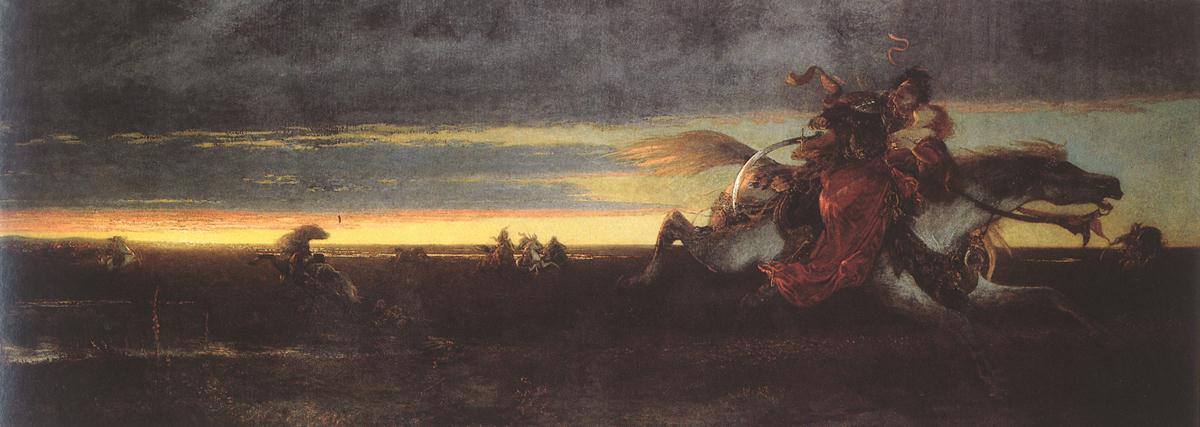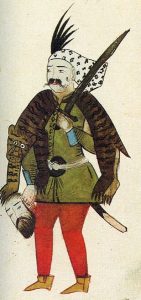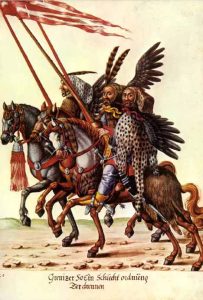Support our authors
DonateThe Heroic Death of Mihály Dobozi

Battle of Pusztamarót (13-15 September 1526).
After the Battle of Mohács…
Sultan Suleiman defeated the Hungarian army on 29 August 1526 and the young Hungarian King, Louis II, had died in the battle.
(Watch the animated video of the battle with English subtitles here: https://www.youtube.com/watch?v=mdIgp1davEY)
However, the Sultan was not sure of his victory and ordered all of his cavalrymen to remain in the saddle during the rainy night.
So, the Ottoman army set out on 2 September towards the Hungarian Capital and reached the abandoned Buda Castle on 12 September. In the meantime, the Ottoman irregular riders, the Akindji, were burning the area around the Danube River. Up to then, the inhabitants had only known about the Turkish peril from hearsay, but the sudden appearance and ruthlessness of these raiders must have been a horrible experience.
Very few of the locals had a chance to fight back and resist, most of them fled or perished on the spot.

Who made a stand?
Yet, there was a bloody clash in the Vértes Mountains near the Village of Pusztamarót to the north of Buda.
The peasants and city dwellers of the area, along with a few soldiers thronged together. They brought their families, valuables, and animals with them.
They built a wagon-fort from their carriages and reinforced it with trees cut from the forest. It was next to the fortified hunting-palace of the Archbishop and many of them were hiding behind its weak walls as well.
They may have dug trenches around the ad-hoc fortification. As for their number, we have two contemporary data available. István Brodarics mentioned a crowd of 25,000 people. Jeromos Zárai wrote in his letter that there were 6,000 peasants. If we add family members to that, the approximate number could be 13-16,000 people, which is also a significant number.
It was the 12 September when the Akindji scouts discovered the camp. First, they offered free conduct to those who would come out, but this was not successful.
Then, they attacked, however, the number of Turks was just a fragment compared to the number of defenders.
Moreover, the Hungarians had rifles and fought hard so the enemy was easily repelled. When the Turks received further reinforcement they launched a second attack and were bloodily beaten back.
More assaults were launched but in vain. Finally, they asked for help from the main army of the Sultan which was in Buda. Their envoy must have arrived in Buda on the evening of 13 September because a strong Ottoman unit marched out in the early morning of the next day towards Pusztamarót.

A desperate fight to the last man
The Sultan had given the order to take the fort by all means necessary and dispatched 500-600 Janissaries and 5-10,000 cavalrymen. He also sent along some lighter cannons. This army arrived at the wagonburg about the time the sun rose on 15 September.
They joined the Akindjies and attacked the camp at once. The artillery fire of the cannons and the shots of the Janissaries were very successful. The infantry took the wagonburg with one charge, although suffering significant losses while doing so. There was a high-ranking Turkish officer who died during this assault, the leader of the unit.
He was the nephew of Grand Vizier Ibrahim. The corpse of this officer was carried to Buda and he was buried there. His death was mourned even by the Sultan. This and the many other casualties must have been the reason for the Turks to take such heartless revenge on the peasants. They gave no mercy and slaughtered everybody without exception.
(Buda Castle: http://budacastlebudapest.com/category/buda-castle-history/ )
Only a few of them were able to escape and hide in the forest. Also, a few captives were taken because they meant good money in the slave market. The Ottomans looted and burned the wagonburg along with the Archbishop’s Palace and the village. Then they returned to Buda.
The Doom of Mihály Dobozi and Ilona
According to a Hungarian legend, the death of Lord Mihály Dobozi and his wife is connected to this event. Dobozi was a local nobleman and when the Turks took the wagonburg, he mounted his saddle along with his wife and fled.
Yet, the horse was getting tired under the double burden and the pursuing Turks almost got them. This was when Ilona Farmos, the wife of Dobozi, began to beg his husband to kill her. She did not want to be a slave in a harem. First, Dobozi did not want to hear about it. Not much later there were only a few steps between them and the Turks so the woman jumped off the horse.
This was why the husband finally fulfilled her request.
He stabbed his wife. Then he faced his pursuers and died with a sword in his hand.

